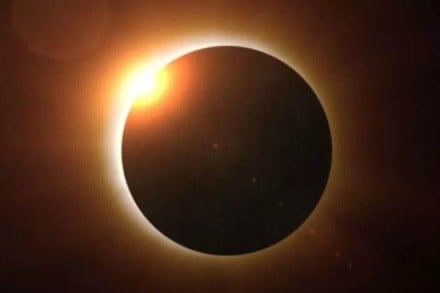Total Solar Eclipse is a situation in which the Moon is directly between the Earth and the Sun leading to an umbra in different parts of the world and penumbra in other regions. This year the event will take place on Tuesday the 2nd of July. The whole duration of this solar eclipse will be approximately four minutes and 33 seconds.
The eclipse will cast an Umbra shadow going through a 6,000-mile path but only a narrow zone of the Pacific Ocean and South America will fall under the region of Umbra during the celestial event. And since only South American land will fall in the region of the Solar Eclipse only a few countries will get a chance to witness the event directly.
Things that you should know about Tuesday’s Total Solar Eclipse:
1. Timing in India
Though the celestial event of the solar eclipse will be seen over the South Pacific Ocean. In Easter Daylight Time (EDT), the partial eclipse will start at 12:55 PM EDT which in Indian Standard Time (IST) will be 10:25 PM IST. So the sad news is that we cannot witness the celestial event here with naked eyes. The total solar eclipse will not be seen in India as India will be on the other side of the Earth during the event. But the lovers of cosmos can tune to a number of websites to watch it online.
In India, the eclipse will start at 10:25 PM IST and will enter the umbra phase starting from 11:31 PM IST on July 2nd in reference to the location where it will be first seen and it will last till 12:52 AM IST on July 3 in reference to the location where it will be last seen.
Also Read: Big breakthrough! Astronomers discover precise location of cosmic radio waves
2. The science behind total solar eclipse?
A solar eclipse occurs when the Moon is between the Sun and the Earth and thus its shadow is cast at different parts of the Earth Surface, as the Sun’s light is blocked totally and partially by Moon. Total Solar eclipse is when the Moon’s Umbra falls on Earth’s surface as it blocks the Sun totally.
3. Where should you be on Earth to see Solar Eclipse
According to Space.com the starting point of the eclipse will be from 4,000 km northeast of Wellington, New Zealand. The second landfall will be seen in central Chile. The shadow (Umbra) will go towards southeast direction through central Argentina and will end just before reaching Uruguay.
4. Do not use Normal Sunglasses to watch the event
Do not make a mistake of watching it with naked eyes or with the use of normal sunglasses, if you are in the part of the world that will witness the event. If you want to see the event make sure to use the specially designed glasses for eclipse and other celestial events. If you are in a part of the world where you can directly witness the total solar eclipse or a partial solar eclipse, remember not to see it with naked eyes.
The event is a much awaited celestial event and gives the astronomical scientists to study different celestial complexities. Also, it is one of the most interesting events for the people of the earth and people have had numerous spirituals beliefs related to this event.
